Chemicals and Petrochemicals Expo (CPX) 2025
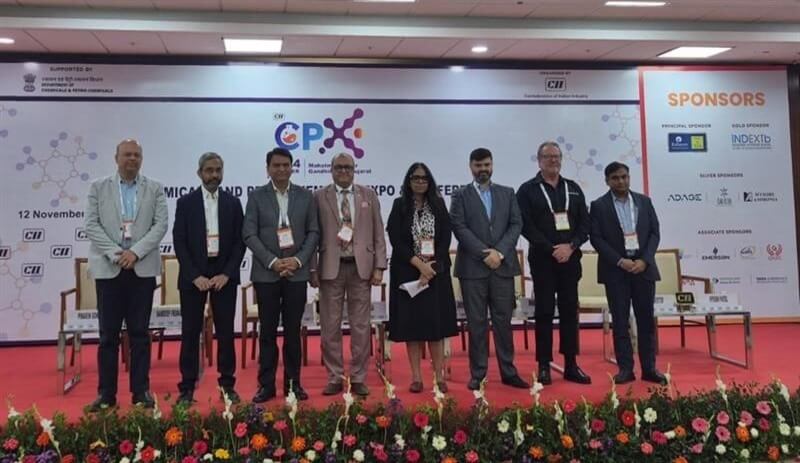
Chemicals and Petrochemicals Expo (CPX) 2025
Date: 12th-14th Nov
Organizer: CII
About the Event: Ms. Jigyasa Kishore (she/her), Vice President, Moglix, recently spoke at the Chemicals and Petrochemicals Expo (CPX) 2025, organized by Confederation of Indian Industry, on “Becoming Future Ready with AI.”
Moglix CPO Leadership Evening: Exclusive Roundtable with 35+ CPOs & CFOs in Dubai
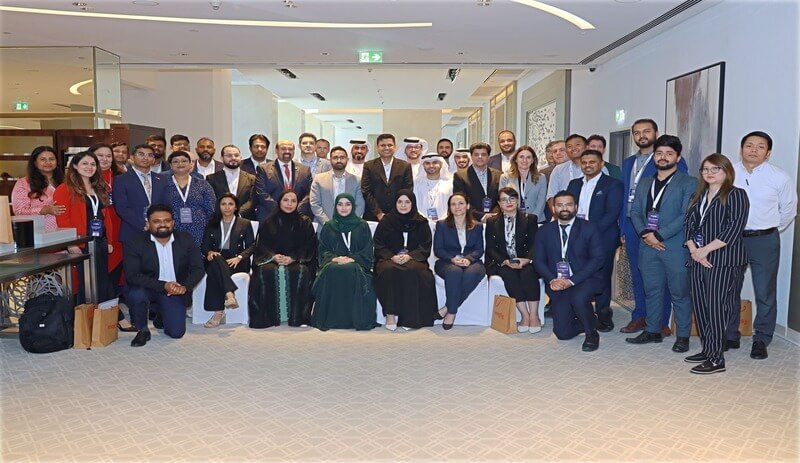
Moglix CPO Leadership Evening: Exclusive Roundtable with 35+ CPOs & CFOs in Dubai
Date: 12th Nov
Organizer: Moglix
About the Event: An exclusive CPO Leadership Meet in Dubai marked 5 years of Moglix in the UAE and 10 years globally. Our Founder & CEO, Mr. Rahul Garg, engaged with 35+ Chief Procurement and Supply Chain Leaders from across the GCC, sharing his vision for the next decade. The discussion, themed “The Next Decade of Procurement: From Cost Control to Value Creation,” highlighted the growing strategic role of procurement.
Scaling Efficiency: Lessons from Enterprises That Standardized MRO Procurement

Scaling Efficiency: Lessons from Enterprises That Standardized MRO Procurement
Want to Stop Wasting Time (and Budget) on MRO? Standardization Might Be Your Best Move
If your MRO procurement still looks like a patchwork of different vendors, systems, and processes across locations, don’t worry, you’re not the only one.
For a lot of growing businesses, this kind of fragmentation just happens. One site orders from its preferred local vendor. Another sticks with what they’ve always used. A third facility? Probably has someone ordering critical spares off a spreadsheet they made five years ago.
But here’s what enterprise-level businesses are doing differently: they’re pulling all those scattered processes together and building one cohesive, standardized MRO procurement system. And the results? More control, faster turnaround, and less operational friction across the board.
Let’s get into how they’re doing it-and why it’s working.
First, Why Standardization Matters So Much for MRO
MRO isn’t always high on the priority list. It’s not as flashy as direct procurement or production lines. But when it’s not handled right, it creates real headaches:
- Delayed maintenance jobs
- Unplanned downtime
- Overstocking or emergency buying
- Ballooning vendor lists
- Inconsistent pricing and terms
When every facility or team is sourcing differently, even simple purchases get complicated. Multiply that across dozens of locations or business units, and suddenly your “small” MRO spend turns into a margin killer.
What the Best-Run Companies Are Doing Differently
1. They’ve Centralized the Process-But Kept Local Flexibility
Top-performing enterprises don’t centralize just for the sake of it. They do it to simplify and scale, without slowing down frontline teams.
Here’s how that looks:
- A central system manages sourcing, cataloging, and vendor relationships
- Local teams order from an approved list of parts and suppliers
- Exceptions are tracked-not punished-so real needs still get met
- Finance, procurement, and ops finally speak the same language
Result: fewer errors, faster sourcing, and a whole lot less back-and-forth.
2. They Built a Unified SKU Catalog (And Stuck With It)
It sounds simple, but this is where the magic happens. Enterprises that standardize MRO build a master catalog with consistent part numbers, descriptions, and specs across locations.
No more guessing whether the “ball bearing 6004Z” in Plant A is the same as the one listed as “BB-6004Z-S1” in Plant B.
One catalog. One source of truth. Fewer mix-ups.
Plus, once you have consistency in SKUs, it’s easier to negotiate pricing, manage inventory, and run reports that actually mean something.
3. They Lean Into Data (Instead of Chasing It)
Before standardization, most teams couldn’t even see their MRO spend clearly. It’s buried in spreadsheets, siloed in local systems, or spread across dozens of vendors.
Enterprises that have cracked the code get serious about data:
- Real-time visibility into spend by category, site, or cost center
- Usage patterns that help forecast needs (and reduce overstocking)
- Supplier performance metrics that drive better decisions
With the right tech, MRO stops being a reactive cost center-and starts becoming a strategic function.
4. They Reduced Their Vendor Count (But Didn’t Lock Themselves In)
One major win from standardizing? Trimming the vendor list.
The companies doing this right usually consolidate down to a few trusted partners per category, then set clear service expectations. They’re not locked in-they’re just strategic about who they work with and how.
And guess what? Fewer vendors means:
- Better rates
- Smoother communication
- Cleaner invoicing
- And way fewer headaches
Lessons from the Field: What Enterprise Teams Have Learned
Let’s break down some real-world takeaways from companies that have already been through the process.
Don’t Wait Until You Scale to Standardize
Most companies wait until things get chaotic before trying to bring order. But the earlier you set the foundation-like SKU standards, approved vendor-managed inventory, and centralized systems easier it is to grow without everything falling apart.
Standardization Doesn’t Mean Slowing Down
The fear is always: “Will this add red tape?” The answer: not if you do it right. The best systems actually speed things up by giving teams what they need, when they need it-just without the guesswork.
It’s a Culture Shift, Not Just a System Shift
Standardizing MRO isn’t just a procurement or IT initiative. It needs buy-in from maintenance teams, plant managers, and finance. Companies that get this right focus just as much on change management as they do on the tech itself.
What Results Are We Talking About?
| Change Made | Time to See Results | Typical Impact |
| SKU Catalog Standardization | 2-3 months | 10-20% reduction in duplicates |
| Vendor Consolidation | 4-6 months | 8-15% savings on unit cost |
| Centralized Procurement System | 3-5 months | 20-30% fewer stockouts |
| Real-time Spend Visibility | 1-2 quarters | Faster decision-making, better forecasts |
| Process Alignment Across Sites | 6-9 months | Stronger compliance + efficiency |
Thinking About Standardizing Your MRO Procurement?
Here’s where to start:
- Audit your current vendor list: You’ll probably find 5 suppliers for the same product
- Look for duplicate SKUs across sites: Clean data = smoother procurement
- Talk to the people using the parts: Maintenance teams often know where the waste is
- Pick one site or category as your pilot: Prove the concept before rolling it out
The goal isn’t to overhaul everything overnight. It’s to bring consistency and clarity-one piece at a time.
Final Thought: Standardization Isn’t Boring. It’s a Power Move.
When you look at the most efficient enterprises out there, one thing becomes obvious: they didn’t scale by doing more of the same. They scaled by doing the same things better.
And that’s what standardizing MRO procurement is really about.
It’s not just about reducing costs. It’s about creating a system that works-across sites, categories, and teams. One that saves time, cuts waste, and lets your people focus on what they’re great at.
You don’t have to chase a hundred moving parts to run a tight operation. You just need the right system-and the right partner like Moglix Business to help you build it.
84th Annual Session of the Indian Roads Congress
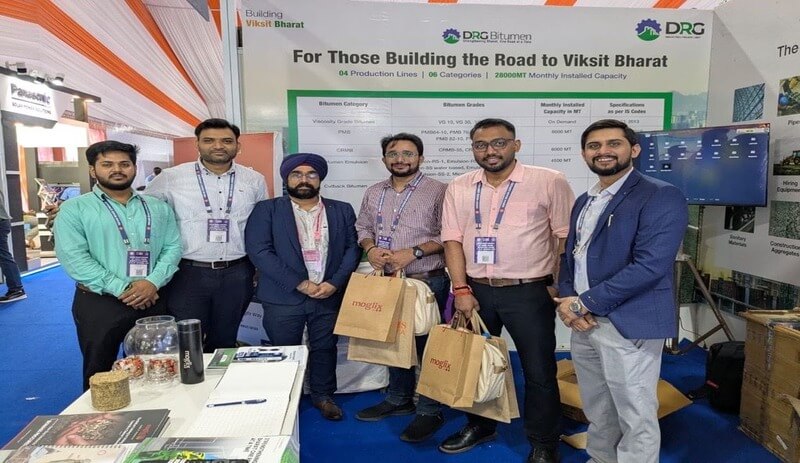
84th Annual Session of the Indian Roads Congress
Date: 7th – 10th Nov
Organizer: IRC
About the Event: In collaboration with DRG Industries, the Moglix booth brought together industry leaders, innovators, and experts for engaging conversations on the future of India’s evolving road network.
CII TG-PackCON 2025
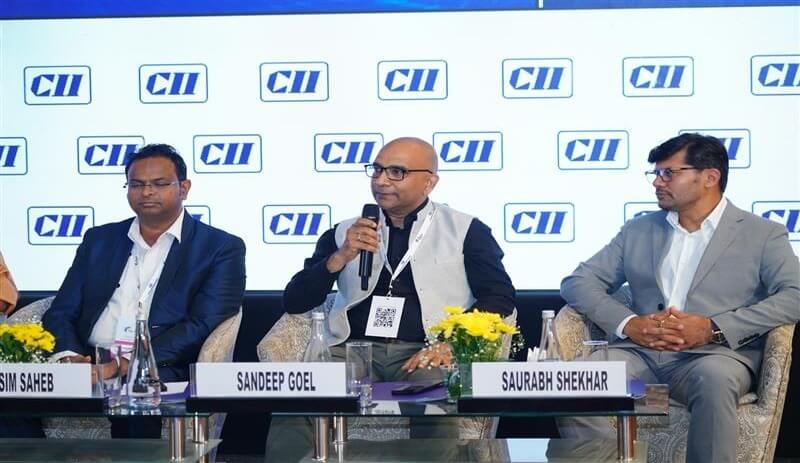
CII TG-PackCON 2025
Date: 6th –7th Nov
Organizer: CII
About the Event: Mr. Sandeep Goel, Managing Director & COO, Moglix, shared his insights on “Efficiency, Competitiveness & the New Growth Equation,” exploring how technology, talent, and transformation are driving the nation’s next wave of industrial progress.
The Power of One: Why a Single Window for MRO Procurement Beats 100 Vendors
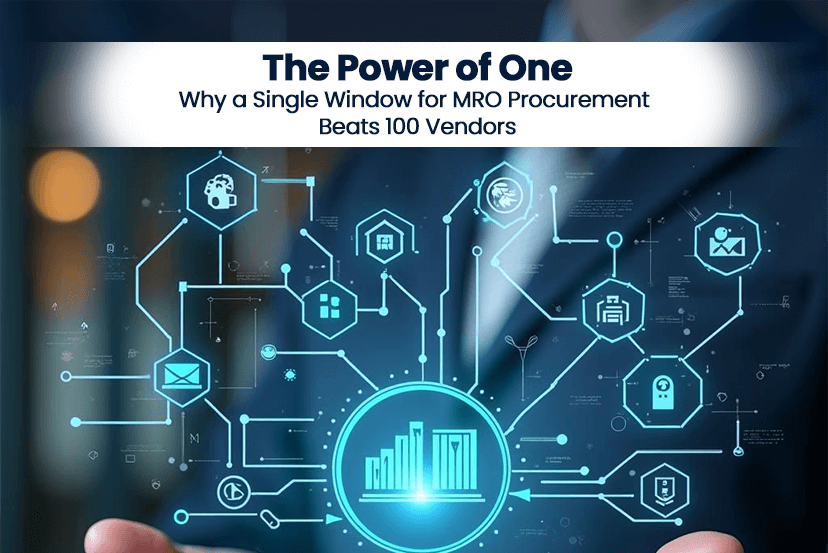
The Power of One: Why a Single Window for MRO Procurement Beats 100 Vendors
Still Managing 100 MRO Vendors? There’s a Better Way.
Let’s be real-Maintenance, Repair, and Operations (MRO) procurement has a habit of getting messy fast.
It starts simple. You need a few spares, a few tools, and a few suppliers. But fast forward a year, and suddenly you’ve got 78 vendor codes, 4 different quote formats, and a spreadsheet that no one wants to touch.
Sound familiar?
That’s why more companies are rethinking the entire approach-ditching the vendor jungle and moving to a single-window MRO procurement model. Less admin. More control. Lower total cost. And a supply chain that doesn’t make your ops team want to scream.
Let’s break down what’s actually changing-and why consolidating MRO just makes sense right now.
Why Juggling Vendors Doesn’t Work Anymore
There was a time when spreading your MRO spend across 10, 20, even 100 vendors felt like a good strategy. You’d compare prices, negotiate better deals, and avoid dependency on any one supplier.
But here’s the thing: that logic falls apart when you factor in everything else.
Multiple vendors mean:
- More POs, more follow-ups, more chasing
- Disconnected data across categories
- Zero visibility into total spend or savings
- Wildly inconsistent lead times
- Overlapping SKUs with different specs
And the real kicker? The “cost savings” from sourcing everything piecemeal usually disappear once you add up the hidden costs: delayed maintenance, downtime, overstocking, urgent shipping fees, you get the idea.
What a Single-Window Model Actually Looks Like
A single-window MRO procurement model doesn’t mean you’re buying less. It means you’re buying smarter through one trusted partner who manages the complexity for you.
Here’s what it looks like in action:
- One partner manages sourcing across multiple categories
- A unified catalog with pre-vetted SKUs and suppliers
- Centralized tracking, billing, and reporting
- Fewer touchpoints, cleaner communication
- Built-in compliance with your quality and sourcing policies
You still get access to multiple brands, product options, and price points—just without the chaos of dealing with 30+ vendors every month.
The Payoff: Why More Companies Are Consolidating Now
1. Lower Total Cost of Ownership (TCO)
Sure, the unit price might be 2% lower from Vendor X. But when you factor in freight, admin, downtime, and duplicate inventory? The “cheaper” option often ends up costing you more.
Single-window models help optimize the entire MRO lifecycle-from sourcing to stocking to invoicing. That’s where the real savings are.
2. Faster Turnaround, Fewer Stockouts
Working with one partner means faster sourcing, quicker issue resolution, and better planning. You get clearer visibility into stock levels, lead times, and reorder points, so maintenance never gets held up because someone forgot to order bearings last week.
3. Streamlined Workflows (That People Actually Use)
No more chasing five vendors for five quotes. No more mismatched part numbers or surprise substitutions. A single-window system standardizes the entire workflow, so your teams can focus on what matters-keeping operations running smoothly.
4. Better Negotiation Power
When you consolidate spend with one partner, you gain leverage. That leads to better rates, stronger SLAs, and actual service guarantees. You’re not just another small order in someone’s inbox-you’re a strategic customer.
5. Real Data, Real Decisions
When all your MRO procurement runs through one source, suddenly you can see things clearly. Which plants are over-ordering? Where is the bleeding margin? What’s the actual cost of maintaining that legacy machine?
You can’t fix what you can’t see. Single-window models give you the data to make smarter calls, faster.
What This Looks Like on the Ground
Let’s say you’re running multiple facilities across regions. Each site has its own vendor list, preferred brands, and procurement process. Sounds flexible-but in practice?
- You’re duplicating efforts at every site
- You’re missing out on volume discounts
- Stockouts and urgent buys are happening too often
- There’s no clean way to compare or track spend across the network
Now picture this instead:
- All MRO procurement flows through one central partner
- SKUs are standardized where possible
- You get consolidated billing and real-time dashboards
- Each facility still has autonomy-just within a smarter, unified system
Suddenly, you’re not just keeping up. You’re running leaner, faster, and more predictably.
A Few Things to Watch Out For
Going from 100 vendors to one isn’t about locking yourself in. It’s about building a relationship with a partner who can flex with you.
That means:
- Transparent pricing
- A strong vendor network behind the scenes
- Custom catalog options for your specific needs
- SLAs that actually reflect your ops schedule
- Ongoing support-not just another helpdesk ticket
You want a partner, not a gatekeeper.
Final Thoughts: Less Chaos, More Control
The old model of managing a long list of MRO vendors is showing its cracks. It eats up time, bloats your costs, and keeps your teams in reactive mode.
Switching to a single-window MRO model at Moglix Business not only cleans up the mess but also gives you control, consistency, and clarity where it matters most.
And here’s the best part: it doesn’t mean giving up flexibility. It means being intentional about how you buy, who you partner with, and how your systems support your business-not slow it down.
Rubber and Polymer Sourcing for Automotive: A Hidden Supply Chain Risk
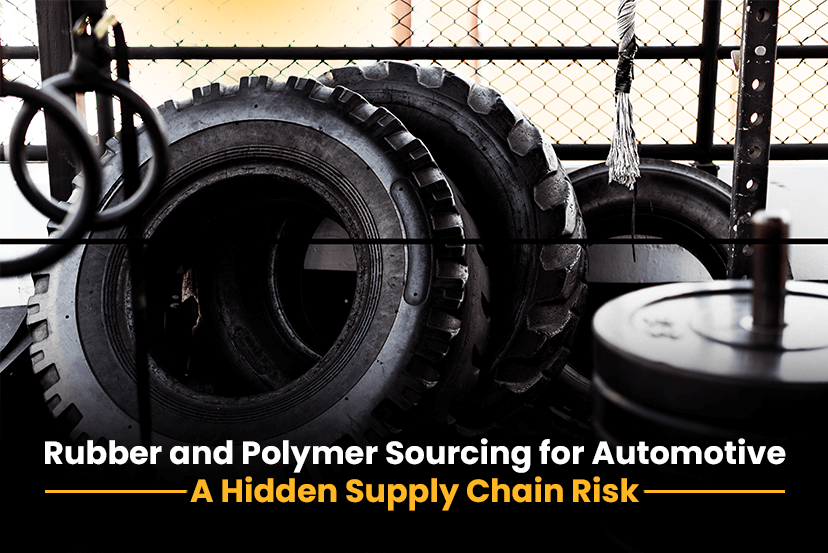
Rubber and Polymer Sourcing for Automotive: A Hidden Supply Chain Risk
When people speak of supply chain risks in the auto industry, they tend to turn toward semiconductors, steel, or rare earth minerals. Very few pause to think about rubber and polymers. Yet, take them away and the industry would grind to a halt. Cars wouldn’t have tires, seals, or hoses. These substances permeate the world around you, but you hardly ever hear about them.
In this blog dive, we’re going to talk about the ways rubber and polymers are sourced and why it matters for the automotive industry, what makes it especially tough for procurement pros to manage, and how the rise of EVs is reshaping demand.
The Role of Rubber and Polymers in Automotive Manufacturing
Manufacturers depend on two main streams: first, natural rubber, which is mainly extracted from plantations in Asia, and second, synthetic polymers, which are made from petrochemicals.
Natural rubber is important for its flexibility and durability, whereas polymers provide strength, heat resistance, and weight reduction. It generally helps in today’s fuel-efficient designs.
Every car contains far more rubber and polymer than most consumers realize. These materials are used extensively in:
1. Seals and gaskets that keep engines and transmissions airtight.
2. Hoses and belts that manage fluids and power transmission.
3. Bushings and suspension components that absorb shock and improve comfort.
4. Dashboards, bumpers, and interior trims made from synthetic polymers and resins.
In some estimates, polymers account for a vast volume in modern cars, especially as automakers focus more on lightweighting.
Even though they are a much smaller percentage of the total material cost than steel or aluminum, rubber and polymers are mission-critical. And if a factory runs short of polymer resins or critical rubber parts, entire assembly lines can grind to a halt.
Why Rubber and Polymer Sourcing Is Different From Other Materials
Rubber and polymer buying isn’t logic that applies to buying steel or aluminum. The issues are more complex.
1. Heavy Dependence on Southeast Asia for Natural Rubber
The rubber industry, for one, was geographically concentrated. Nearly 90% of it comes from Southeast Asia, largely Thailand, Indonesia, and Vietnam. It is produced all over the world, millions of small farmers at the mercy of weather, soil quality, and diseases.
2. Synthetic Polymers and Oil Price Linkages
Synthetic polymers are bound to the oil markets. They derive from petrochemicals, which means their prices many times behave in sync with crude oil. Any geopolitical shake-up in the world’s oil-producing regions can send polymers soaring, pinching automakers that are already running on razor-thin margins.
3. Stringent Quality Demands from Automakers
The bar for quality in auto is unusually high. Parts have to endure intense heat, pressure, and wear over multiple years of use. That implies procurement groups cannot just replace suppliers in the event of shortages. There is only a finite set of suppliers that can meet the standards on a consistent basis, further constraining the choices.
Hidden Supply Chain Risks in Rubber and Polymer Procurement
Risks involved in rubber and polymer sourcing tend to go unnoticed until they become severe.
1. One of the largest risks is environmental vulnerability. Rubber plantations are subject to climatic risks, floods, storms, or extended droughts can decisively affect yields. Crops have been ruined by diseases such as leaf blight. Piled onto this is increasing pressure to stop deforestation associated with rubber farming, leaving procurement leaders competing on cost and sustainability.
2. Price volatility has ever pursued these markets. Price volatility typifies natural rubber, whose prices have fluctuated wildly in the past few decades, while prices of synthetic polymers rise and fall with oil. For manufacturers producing on huge scales, these fluctuations ripple across whole product ranges.
3. Compliance and ESG pressures are also mounting louder. Car companies are being called upon to demonstrate that their sourcing is both sustainable and ethical. Joining initiatives such as the Global Platform for Sustainable Natural Rubber (GPSNR) is becoming less voluntary and increasingly a reputational imperative.
4. There are logistics and geopolitical risks. With all the production based in Southeast Asia, a disruption at ports or shipping lines can hold up deliveries globally. Shortages of containers during the pandemic showed just how exposed these supply chains are.
How EVs Boost Rubber and Polymer Demand
The shift to electrical mobility introduces even greater complexity. EVs do not contain engines in the conventional sense, but they rely heavily on sophisticated polymers and rubber products.
Battery packs, for instance, need specific polymer encasements and insulation to control heat and safety. Light polymers offset the tremendous weight of lithium-ion batteries to enable EVs to be more efficient. Thermal stability and water resistance are essential for battery safety, and rubber seals and gaskets have an even larger role to play in this case.
Even the tires vary. EVs need low-rolling-resistance tires that are capable of withstanding more torque and heavier loads without degrading prematurely. This necessitates proprietary rubber compositions, which further strain the supply.
Therefore, EV take-up doesn’t decrease reliance on rubber and polymers; it heightens it. Procurement leaders need to obtain not only greater volumes but also higher-specified grades of those materials.
Conclusion
Rubber and polymers might not top supply chain conversations the same way that semiconductors or lithium do, but they are not ones to be ignored. They are the unsung heroes of car performance, safety, and comfort. The issue is that their sourcing is accompanied by special vulnerabilities, geographic concentration, oil dependence, climate risk, and increasing ESG focus.
As EVs continue to grow, demand will only be higher, compounding procurement even further. What was once deemed “secondary” material is now at the forefront of the next generation of vehicle development.
Automotive procurement executives must go beyond cost. They have to think resilience, they have to think sustainability, and think diversified supplier base. Traceability technology spend, strategic supplier relationships over the long term, and sustainably sourcing programs will also be key to addressing these unseen vulnerabilities.
Is your company getting ready to build resilience in rubber and polymer purchasing?
Leverage Moglix Business to drive agility through end-to-end procurement solutions for sourcing rubber and polymer components. Turn your weakness in the rubber/ polymer supply chain into a strategic advantage with us. Get in touch today to see how our technology-driven platform can provide the visibility, reliabilit,y and cost savings your automotive venture needs.
Procurement Challenges in Building EV Battery Supply Chains

Procurement Challenges in Building EV Battery Supply Chains
It is not an exaggeration to term electric vehicles as the ones transforming the global automobile scene. Over the last five years alone, the market for EVs has transitioned from niche to mass. The International Energy Agency records that EV sales passed the 14 million mark in 2023, nearly double their level in 2021. That’s not a modest change; it is a revolution in the way the world perceives mobility.
But underneath each EV driving down the street is a tale of ruthless supply chain stress. Unlike traditional cars, where steel, plastics, and electronics hold sway in procurement, EV manufacturing is rooted in batteries. And batteries are voracious consumers of resources. They demand lithium, cobalt, nickel, and graphite, minerals that are unevenly dispersed across the globe. Consequently, procurement executives have the dual challenge of obtaining sufficient supply and doing so in a manner that is cost-efficient, ethical, and resilient.
Here, in this blog, we are going to discuss the special procurement issues in EV battery supply chains, from raw material shortages to sustainability, and how businesses are coping with this changing world.
Grasping the EV Battery Supply Chain
In an effort to better grasp the procurement puzzle, it is beneficial to first consider how EV batteries are assembled.
An average battery pack consists of cells, modules, and packs. The most complicated part of it all is the cells. They are dependent on a combination of cathodes, anodes, separators, and electrolytes. All these need particular materials. The cathodes, for example, require lithium and nickel; anodes are constructed from graphite.
It begins in mining, proceeds to refining, proceeds further to chemical processing, and then goes to cell and pack assembly. Procurement is absolutely essential at every step. If there is a shortage of mining capacity, or refining is geographically aggregated, then procurement groups have to work their way out by finding alternatives or negotiating long-term agreements.
What sets this supply chain apart from the norm in the traditional automotive world is its fragility. However, steel or aluminum from multiple global suppliers can be easily obtained, while battery-grade lithium or cobalt is much more concentrated, often in politically unstable or geographically limited regions.
Challenges in EV Battery Supply Chains for Procurement
Procurement teams in this domain do not merely buy materials but are stepping into a minefield of risks. Some of the greatest challenges are:
1. Shortages and Price Fluctuations
Lithium has been referred to as the “white gold” of the EV era, and for a good reason. Prices have skyrocketed between 2020 and 2022 before tempering down, but the underlying problem persists: demand is increasing faster than supply. A new mine for lithium can take close to a decade to come online, with automakers bringing new EV models to market every year. This mismatch creates cost predictability nightmares for procurement leaders.
2. Converged Supply Chains
More than 70% of EV battery manufacturing is done in China. That level of concentration is effective from a manufacturing perspective but dangerous from an acquisition point of view. Any geopolitical strain, trade restriction, or domestic interruption can have far-reaching effects across the world, exposing manufacturers to vulnerabilities.
3. Long Lead Times
Unlike with conventional auto components, which generally can be procured in a hurry, EV battery materials are long-range. Approvals to mine, facilities to refine, and gigafactory expansion all have multi-year schedules. For procurement buyers, this entails planning decades in advance, in some cases making gambles on technologies and suppliers that won’t deliver for years.
4. ESG and Ethical Issues
No EV maker would want to sell “green” vehicles manufactured using materials associated with child labor or ecologically harming the environment. But this is a genuine fear, particularly with regards to cobalt mining in the Democratic Republic of Congo. Procurement professionals are compelled to trace and certify sourcing, balancing commercial requirements and ethical considerations.
5. Logistics and Transportation
Batteries are heavy, bulky, and hazardous materials due to their flammability. Shipment across continents entails specialized care and strict mandatory requirements. This imposes another level of expense and complexity that procurement teams have to contend with.
Sustainability and Circular Procurement
There is another dimension to procurement in EV supply chains: sustainability. There are increasing demands from regulators, investors, and customers for cleaner solutions. For procurement teams, this is not a “nice to have”; rather, it is fast becoming a compliance requirement.
One such promising sector is circular procurement. Rather than using virgin mining, firms are going in for recycling. Recycling EV batteries at the end of their life are being stripped down, and major metals like lithium, cobalt, and nickel are recovered for reuse. Recovery rates as high as 95% for major materials have been estimated by some studies.
In tandem, “second-life” uses are being developed. Batteries that are no longer up to scratch for EVs can be used for stationary energy storage applications, like backing solar farms or balancing power grids. That minimizes waste and increases the choice procurement teams have in sourcing practices.
By integrating circularity into procurement, businesses are able to decouple themselves from raw material scarcity while still meeting sustainability objectives. The EU Battery Regulation is already moving in this direction, requiring recycled content in new batteries, which is where the global market is going.
Increasing Competition Among OEMs for Battery Supply
If procurement issues were not complicated enough, competition between automakers makes it more difficult. It’s a regular sprint with every major OEM in the race: Tesla, BYD, Volkswagen, General Motors, Hyundai, and several dozen others. The truth is that battery availability is limited, and the large players are moving quickly to acquire it.
Tesla, for example, has entered into multi-year deals directly with Australian lithium miners. Volkswagen has taken stakes in cell production joint ventures in Europe. Chinese giants such as BYD are integrating vertically, from mining through to finished cars.
This race for military equipment is detrimental to smaller automakers and startups. They lack the volume or budgetary strength to secure supply commitments.
Procurement teams in these organizations must think out of the box!!
Moglix Business specializes in tech-enabled B2B procurement and supply chain solutions, offering MRO sourcing, custom manufacturing procurement, and infrastructure industry supplies to enterprises. Their digital transformation capabilities directly address EV battery supply chain procurement challenges through vendor consolidation, complete visibility dashboards, tech-enabled tracking, and integrated procurement platforms that enable predictability, cost efficiency, and agility at scale for complex manufacturing supply chains like those required in EV battery production.
Margin Protection via Site Aggregation: How Procurement Drives Profitable Growth

Margin Protection via Site Aggregation: How Procurement Drives Profitable Growth
Construction companies across India are fighting a tough battle. Project bids are becoming razor-thin, material prices keep climbing, and clients still expect the same quality at the lowest possible cost.
For companies that are working on large-scale projects, even a small increase in their input cost % can turn their profitable contract into a financial burden.
Take an example, a contractor whose firm bagged three highway projects in different states. They ordered steel; in one state, it was more expensive than in another. Cement was procured during a price hike, and logistics costs ballooned because trucks were traveling half-empty. The company delivered the projects, but the margins were almost gone.
This story is more common than many admit. The root cause is simple: most firms still treat each site as its own procurement unit. It feels natural since projects vary in timelines and needs. But this approach quietly drains profitability.
The smart players are shifting to a different approach. They are aggregating material demand across multiple sites and negotiating as one large buyer. This approach to site aggregation is helping contractors protect their margins and turn procurement into a real profit driver.
In this blog, we’ll find out how the procurement teams can protect margins through site aggregation and drive profitability in projects.
The Margin Pressure in Large Projects
Step into any contractor’s office today, and the frustration is the same. Here are some
1. Clients push for the lowest bids while still demanding top-quality materials.
2. Commodity prices for steel, cement, and fuel swing unpredictably.
3. Skilled labor is harder to find and more expensive to retain.
Now imagine these pressures multiplied across multiple project sites. A company running housing projects in three cities may source cement separately at each location. One site negotiates with a local supplier and pays a fair price. Another, short on time, accepts higher rates. A third places an order during a price surge and pays even more. By the end of the quarter, the same company had paid three different prices for essentially the same material.
That’s not all. With separate orders, purchase volumes are smaller, which means weaker bargaining power with suppliers. Each site builds its own vendor relationships, doubling administrative work. Different suppliers provide varying material grades, raising the risk of quality mismatches. And then there’s logistics: one truck goes out half-full to Site A, while another makes a nearly identical journey to Site B the very next day.
The combined effect is brutal. What looked profitable during bidding becomes a struggle to break even once fragmented procurement costs add up.
What is Site Aggregation in Procurement?
Site aggregation flips this fragmented model on its head. Instead of treating every project as a standalone buyer, companies combine demand across all sites and negotiate centrally.
Think of it like pooling your shopping list with neighbors. Instead of each person going to the market and paying retail prices, everyone combines their list, buys wholesale, and saves more.
In infrastructure, the difference is enormous. Imagine a company constructing ten highway stretches across states. If each site orders 100 tons of steel separately, suppliers see them as small customers. But if procurement aggregates the demand into a 1,000-ton order, the company suddenly has leverage. Suppliers not only offer better rates but also prioritize deliveries for such a large, steady client.
Site aggregation can be done in stages. Some firms start small, aggregating within one region. Others combine demand by material type, like steel or cement, across sites. The most advanced treat their entire portfolio as one coordinated procurement operation.
Why Site Aggregation Protects Margins?
The power of site aggregation lies in the cumulative benefits it creates:
1. Volume pricing power
Bigger orders secure better discounts. A company sourcing 500 tons of steel in one go can save 5–15% compared to fragmented orders. Those savings directly strengthen margins.
2. Smarter logistics
Instead of each site arranging separate deliveries, suppliers plan efficient routes that serve multiple sites. This cuts per-ton transport costs by 20–30% and reduces empty return trips.
3. Reliable suppliers
Suppliers prioritize larger and predictable contracts. Aggregated demand locks in their commitment to delivery schedules, reducing costly site delays.
4. Leaner inventory
Instead of every site keeping a separate buffer stock, companies can optimize inventory across projects. Excess from one site can be shifted to another, reducing waste and carrying costs.
5. Stable pricing
Centralized contracts shield companies from sudden price spikes. All sites pay the same negotiated rate, bringing predictability into cost planning.
Best Practices for Implementing Site Aggregation
Shifting to site aggregation isn’t as simple as pooling orders. It requires process discipline and the right tools. Successful companies follow a few best practices:
1. Classify materials smartly: Standard materials like steel, cement, and aggregates are perfect for aggregation. Specialized, site-specific items may still need local sourcing.
2. Forecast demand centrally: Gather needs from every location and input them into a single demand plan. Continuously update as project timelines change.
3. Facilitate cross-site sharing: Establish simple policies for redistributing surplus material from one site to another to minimize waste.
4. Train site teams: Site supervisors and managers should know how central procurement impacts their schedules and how to coordinate accordingly.
5. Leverage digital platforms: Manual tracking isn’t going to work. Digital procurement systems provide visibility across locations, automate consolidation, and enable simple monitoring of supplier performance.
Procurement as a Profit Driver
For decades, procurement was seen as a cost center, a function that cut purchase orders and managed invoices. Site aggregation is showing companies that procurement can be a strategic profit lever.
By concentrating spending, procurement teams are able to gain negotiating leverage, level out cash flows, and minimize waste. They create more robust relationships with suppliers that extend beyond transient price negotiations. Senior leaders are beginning to hold procurement accountable not only for cost avoidance but also for its direct effect on the profitability of projects.
Together with Moglix, discover how much margin your company could safeguard if all project sites were bought smarter.
Moglix Business accelerates margin protection and revenue growth for businesses through site aggregation in procurement, allowing cost savings across multiple project locations, supplier consolidation, and landed cost optimization. Our technology-enabled solutions accelerate supply chain visibility and simplify buying, allowing clients to attain greater margins and sustainable expansion while minimizing leakages and procurement expenses.
Tooling Procurement in Automotive: Why It’s Different From Other Industries

Tooling Procurement in Automotive: Why It’s Different From Other Industries
If you’ve ever wondered why buying tools and equipment for car manufacturing feels like a whole different ball game compared to other sectors, you’re about to find out.
On the surface, procurement seems like an easily understood process: you require tools, so you buy them. Fortunately, tooling procurement in the automotive sector is a complex process driven by specific requirements, time constraints, and risk factors.
In this blog, you’ll understand why this process is special and what it means for manufacturers passing through this extremely important phase.
Understanding Tooling Procurement in Automotive
Each car on the highway starts life in a factory, formed and assembled using very specialized tools. In the auto industry, “tooling procurement” is the purchasing and management of the dies, molds, jigs, fixtures, and cutting tools that allow mass production. Different from general-purpose equipment, these tools are designed to precise tolerances to accommodate the tight tolerances and repetitiveness of vehicle production.
The contribution of tooling to the car lifecycle is indispensable. It starts at the design stage, where prototypes are produced with the help of custom-made molds and jigs. After a design is settled, mass production needs a huge set of tools that can manufacture millions of identical pieces with consistent quality. From the blanking literature that forms sheet metal panels to the injection molds for dashboards and assembly line fixtures, all phases in the automotive production process rely on successful automotive tooling procurement. Without strong planning and dependable suppliers, the best new car design can’t reach the shop floor.
Differences Between Automotive and Other Industries
On the surface, tooling buying may be no different from one industry to another. The auto industry has some unique characteristics that differentiate it from other industries:
1. Production Scale and Volume
Automotive production is characterized by bulk, repetitive manufacturing. Automakers consistently make hundreds of thousands, if not millions, of the same units yearly. The tooling necessary must thus endure extended usage while producing uniform results. The aerospace industry, on the other hand, works in smaller numbers and extended cycles of production, where the focus is more on precision at the limits rather than volume.
2. Speed of Design Cycles
The car industry brings new models or versions every two to three years, with the need for constant retooling. Every new release requires new dies, molds, and fixtures that conform to the new designs. Compared to business areas like construction equipment or heavy machinery, they might use the same tooling for a decade or even more.
3. Regulatory and Safety Standards
Automotive tooling must adhere to highly stringent global standards, such as ISO 26262 and IATF 16949, that specify quality management and operating safety. These standards make procurement even more difficult, compelling vendors to prove compliance at every stage. On the contrary, the criteria for compliance are less stringent for consumer goods or smaller industrial businesses.
4. Tiered Supplier Ecosystem
In the automotive industry’s tiered supply chain model, finished equipment are delivered by Tier 1 vendors, sub-tools by Tier 2, and lastly, the raw materials by Tier 3 suppliers. Due to the layered model in the procurement of tooling, it gets more challenging, as the procurement needs to be executed and planned across many distinct sectors, regions, and time intervals.
Special Challenges in Automotive Tooling Procurement
The automotive manufacturing process generates a number of procurement challenges that are less evident in other industries.
1. Heavy Capital Investment
Tooling for a new automobile model can cost millions, including not only tools but design, prototype, and testing. Controlling this expense is important through close supplier assessment, fiscal planning, and tight budgeting to avoid cost overrun.
2. Lead Time Constraints
Accuracy tooling, such as dies and molds, may take months to manufacture. Automotive companies have to coordinate procurement with rigorous production plans, with little space for delays or mistakes that can delay launches and cause serious financial damage.
3. Supply Chain Risks
Many automakers depend on international tooling vendors. This makes their production vulnerable to geopolitical crises, supply chain challenges, and trade restrictions. COVID-19 had a major direct impact on the automotive industry, which eventually led companies to consider their sourcing strategies.
4. Integration of Technology
Technologies like CAD/CAM, digital twins, and simulations are transforming procurement. However, global integration is difficult when smaller suppliers lack digital maturity, creating gaps in consistency, collaboration, and innovation across the supply chain.
Localization vs Globalization in Tooling Supply Chains
Historically, automobile manufacturers have relied very much on international suppliers, frequently importing specialized tooling from high-capability nations. Globalization has significantly enabled access to low prices and advanced technologies. However, recent global events highlighted the drawbacks of globalization.
Global supply chains are always vulnerable to lockdowns, trade disputes, and rising logistical costs. Thus, the majority of automobile companies are adopting localization schemes and programs. This modification will surely lead to meeting deadlines soon, reducing reliance on global shipping channels, and creating a resistance barrier towards geopolitical volatility.
Meanwhile, localization is also not trouble-free. There is no uniform level of sophistication in high-end tooling across all locations, and increasing local capacity means investment and lead time. The best approach is usually a hybrid: the utilization of global suppliers to meet specialized demands and local suppliers for volume and robustness. Automotive procurement chiefs must consequently trade cost, capability, and risk when planning their tooling supply chain.
The Future of Automotive Tooling Procurement
The automotive industry is experiencing deep change, and procurement of tooling is changing along with it. A number of trends will characterize the future landscape:
1. Electrification and EV Tooling
The advent of electric vehicles (EVs) is changing tooling needs. Conventional tools for engine and transmission parts are being replaced by battery housing, electric drive unit, and lightweight aluminum structure molds and dies. Procurement teams need to learn to adapt rapidly to these new needs.
2. Industry 4.0 and Digitalization
Smart manufacturing is launching IoT-equipped machines which track tooling wear in real-time. AI-based predictive maintenance will enable producers to foresee tooling failures before they happen, minimizing downtime. Digital twins, virtual copies of actual tools, will enable prototyping and optimization in a shorter time.
3. Additive Manufacturing
In manufacturing specific types of tooling and rapid prototyping, 3D printing is being extensively used. It can even reduce lead times and costs for some exclusive and specialized commodities. While additive manufacturing remains far from traditional tooling, it is still playing a major role in the automotive industry.
4. Sustainability as a Core Requirement
Sustainability will always revolve around procurement decisions. Automakers are making aggressive carbon-reduction targets, which are applied to their suppliers too. Sustainability will become standard practice in sourcing tools for automotives supporting efficient production and recyclable solutions.
5. Resilient Supply Chains
Procurement thinking will focus increasingly on resilience rather than mere cost reduction. This entails diversifying suppliers, investing in local capacity, and using digital platforms for openness and collaboration along the supply chain.
Conclusion
Tooling purchasing within the automotive sector differs from other industries due to its massive size, compressed innovation cycles, rigorous compliance requirements, and multi-tiered supplier base. The risks are all singular: slowness or failure in tooling purchasing can affect entire vehicle launches, affecting revenue, reputation, and competitiveness.
With the sector transforming into electric vehicles, digital manufacturing, and green practices, tooling buying will become increasingly sophisticated and strategic. Are you ready for it?
At Moglix Business, we have a significant relationship with tooling buying in the automotive industry, providing digital supply chain solutions, vendor consolidation, and direct material buying for automobile manufacturers. Our platform facilitates procurement, increases efficiency, provides real-time tracking, and reduces costs, making it a trustworthy partner for automotive tooling and supply chain optimization.
